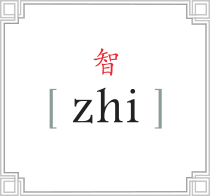An In-Depth on Oolong
Oolong tea entertains two widely and equally accepted historical theories of how its existence came to pass. The first originates in Eastern China during the Ming Dynasty or as Westerners would call it, the 14th - 16th Centuries, set amidst the backdrop of the Wuyi Mountains in the Fujian Provence. During this time the cultivation of this plant was widely romanticized in poetry and prose and was thought to be eponymously named for the mountain range in which it resided, The Wuyi. The second, and more scientific tale, lends itself to what Bob Ross might call a "happy little accident." During the 15th century in Anxi, a small county within the Fujian Provence, a man by the name of Wuliang accidentally allowed his newly harvested leaves to oxidize during a brief moment of distraction. What a sight this must have been?! The result was a partially oxidized offering that indelibly changed the industry forever.

The word "Oolong" translated to English means "Black (or Dark) Dragon" referencing the color and wiry appearance the leaves take on during its journey through oxidation and forming. Through the act of allowing the leaves to be withered and … by oxygen for only a short period of time, the flavors of this tea change dramatically, straddling expressions of both green and black tea alike. Depending on how long the leaves are left to wither and become browned from its exposure to the air as well as how the leaves are manipulated i.e. twisted, curled, rolled or balled, will ultimately affect the strength and exposition of this outstanding offering. We at Zhi oblige a full spectrum of oolongs from green and herbaceous to browned and baking spice.
Traditionally speaking there are two primary harvests of oolong: Spring and Fall. The most distinct differences between Spring and Fall (Winter) Oolongs tend to be most prominent within the class of higher elevation harvests. These oolongs possess powerful aromatics accompanied by an elegant mouthfeel. Due to the chilly temperatures in these mountainous areas, these beauties have a tendency toward a lighter body but much more fragrant expressions. Attributes such as these are what makes these teas so special and unique among all oolongs. The environment in which they are grown, harvested and processed changes their expressions considerably and makes them extremely unique both in flavor and profile.
Winter oolongs are technically harvested in the mid to late Autumn. Picking traditionally begins in late September to early October and lasts to mid-November. The timing of harvest is most often weather-related but not entirely tethered to temperature. Many farmers begin picking in warmer low-lying areas first and move to cooler high elevations as the season progresses.

